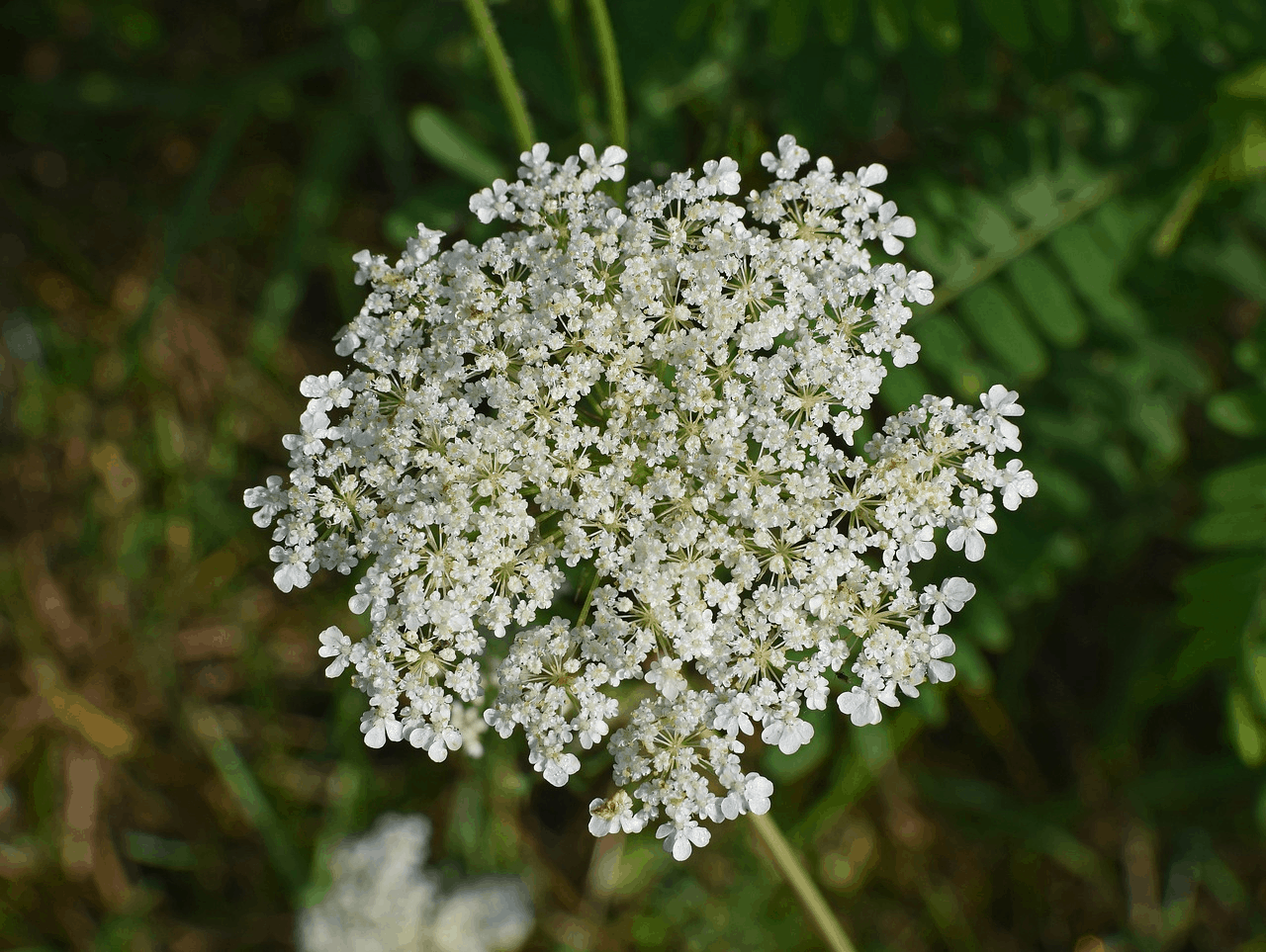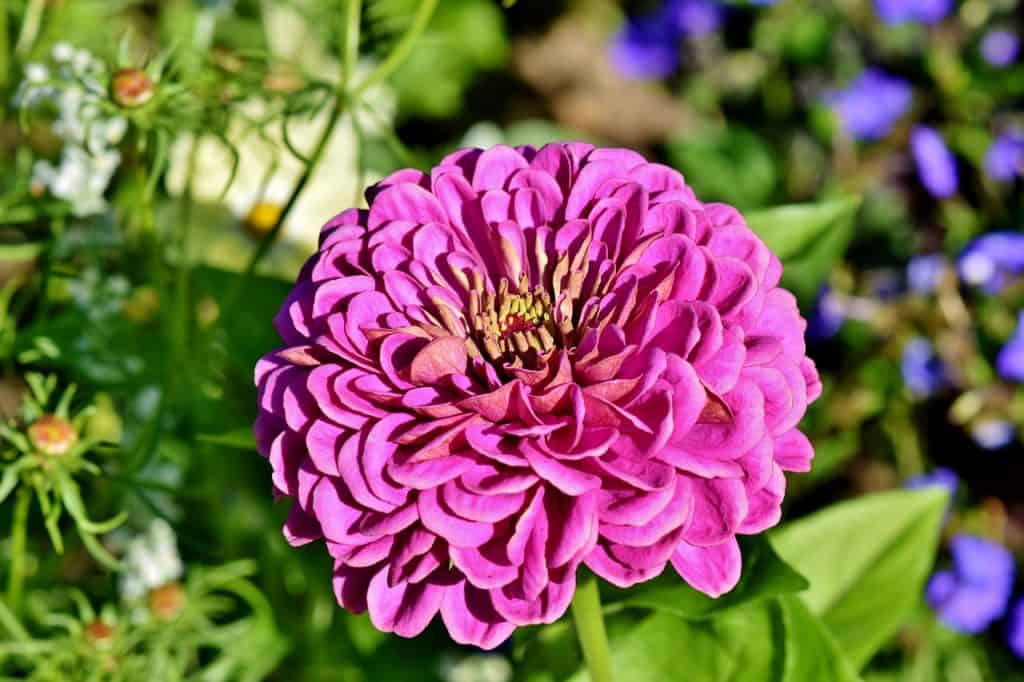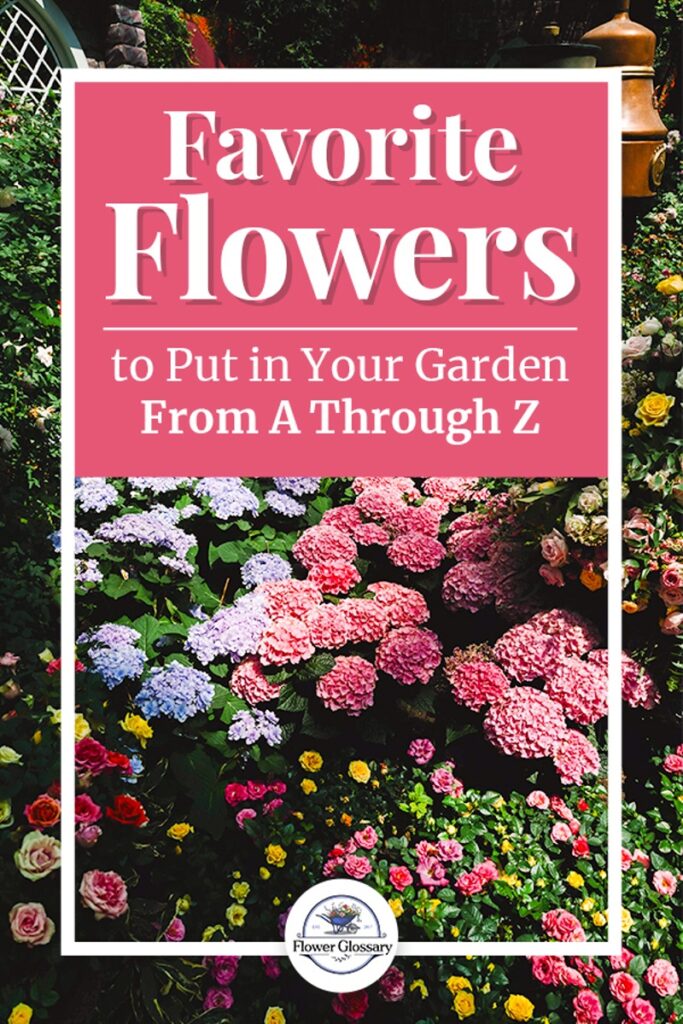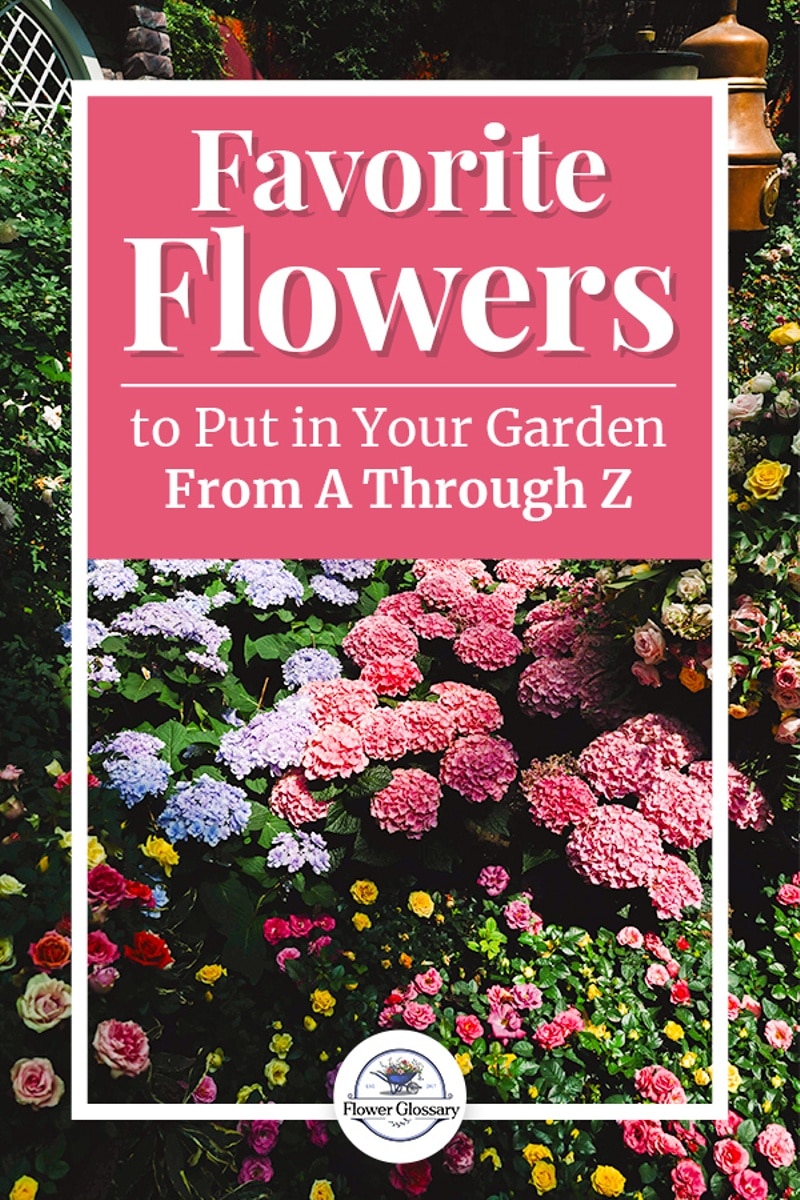Flower Glossary is reader-supported. When you buy through links on our site, we may earn an affiliate commission.
There are hundreds of thousands of flowers to choose from across hundreds of flower families. Many are solely grown for medicinal purposes, while others are grown for cut flowers, pollination, to attract butterflies, or to provide beauty in a home garden.
We cover many different types of flowers, flower meanings, colors, and so much more on Flower Glossary. But today, we want to put a spotlight on some of our favorite flowers. Go through the alphabet of flowers with us below.
Table of Contents
Favorite Showy Flowers from A to Z
It wasn’t easy to choose our favorites out of so many wonderful flowers, but the following plants stand out. Many are for the sole purpose of brightening up your yard and bringing a little cheer to your home as cut flowers. Take a look below to see which flowers made the cut. Click here to see a more complete list of flowers (170+ different types!)
Aster flower

Aster Flowers are perennials that look very similar to daisies, except for their color. They often bloom in shades of light purple and pink, but they can also come in blue, red, and white. They can grow anywhere from a mere 8 inches to a whopping 8 feet. As such, they offer a variety of placement options- along borders, rock gardens, or against the house or fence.
They have a delightful but very subtle scent just enough to attract bees and butterflies. Besides their adorable blossoms, their attractiveness to bees and butterflies is exactly why they’re on our list of favorite flowers.
Begonia

Begonias are one of those types of flowers with dozens of very different varieties. Though they all tend to stay in the pink and purple color range, their petal shape and size vary dramatically. In fact, there are around 1,800 species within the genus. Begonias are typically houseplants that enjoy partial shade and subtropical conditions.
They’re often a bit small, usually 6-12 inches, though they can grow up to 5 feet in height and their colors are dramatic enough to make a huge statement in your garden.
Carnation

Carnations are one of the most identifiable flowers in the world, especially in the US. Besides being a decoration for wrists and jackets, they’re often passed out in schools on Valentine’s Day and to mothers on Mother’s Day. They’re identifiable by their wide, overlapping petals that form thick blossoms in an extensive range of colors.
They’re often dyed or bred for unique dual-colored blossoms as well. This range of colors is a large reason why they’re such a popular flower today. While they can be grown in home gardens, most carnations are grown to be cut flowers for special occasions.
Daffodil

We love daffodils, and it’s mainly for their iconic bright yellow hue (though they sometimes come in white with a yellow center). These perennial flowers are hearty and can grow in most zones across the United States, except hot and humid areas like Florida.
They’re easily identified by their six pointy petals and trumpet-like corona in the center. They sit on long, thin stems that often need to be staked to bear the weight of the blossom. They make great border plants or for adding a pop of color between shrubs.
English Rose

English roses and shrub roses are often mixed up due to their similarities. However, there are subtle differences. English roses are more delicate, and you can clearly see that in their petals. They’re slightly thinner, and they fold out as opposed to in.
They can often withstand the same growing conditions as shrub roses, but they do require more care. English roses were cultivated first in the 1960s, by David Austen. English rose blooms are often more voluminous than typical shrub roses as well, so they make a nice showy addition to any garden.
Freesia

Freesias are such gorgeous little flowers, which is why they make popular cut flowers. They come in a range of colors, including everything from white and red to purple and pink. Freesias also have a very sweet fragrance, making them a top choice for home gardens or containers indoors.
They’re native to South Africa, so they grow best when the weather’s hot and dry. This is important to note since they bloom in late winter and early spring.
Gardenia

Gardenia are beautiful, showy flowers with a heavy but delightful fragrance. They’re most often grown for that fragrance and ornamental purposes. The reason they’re not more common in home gardens is due to their high maintenance nature.
Gardenia don’t tolerate the cold well, so they’re best grown in areas with mild seasons and partial shade. They also need acidic, well-drained soil and regular pruning once it’s finished blooming. This makes it difficult for new gardeners to maintain, but their rarity is one reason we love gardenias.
Hibiscus

Hibiscus flowers are iconic exotic flowers commonly used in tea due to their sweet flavor and aroma. They’re typically purple, though they can come in pinks, reds, yellows, and even multiple colors.
Hibiscus are trumpet-shaped, ranging from 3 to 8 inches in diameter. They can grow as tall as 15 feet and fare best in warmer climates. If they’re in colder climates, they fare better in containers.
Iris Flower

The iris is a tall (up to 28 inches), gorgeous flower that comes in an array of colors. It is precisely that fact that has blessed this flower with its name, Iris- the Greek goddess that rode rainbows. Despite the magical name, it’s a really robust flower that handles harsh conditions and is easy to grow.
Its six petals are distinct, with three inner flowers that curl inward and three that curl downward. Iris bloom in the summer and put on quite the show, attracting butterflies and hummingbirds, which is why they’re one of our favorite flowers.
Jasmine Flowers

Jasmine flowers are an incredibly fragrant flower that lives in tropical regions and warm climates, though you can find it growing wild in the smoky mountain regions of North Carolina. The jasmine scent is quite popular, used for teas, candles, lotions, soaps, essential oils, and perfumes.
They grow as both shrubs and along vines, and though they like warm weather, they grow best in a bit of shade. They produce these delicate white blossoms with oval-shaped petals that curl inwards. We love growing them for their show, but it’s their scent that put them on this list.
Kalmia
Kalmia, or the mountain laurel, calico bush, or spoonwood, is an evergreen shrub commonly found on the east coast, from Main to Florida. That’s quite a range, indeed one of the main advantages of growing kalmia in your home garden. They’re robust and adapt well to different climates and soils.
Their blooms are unique in their elliptical shape and their clusters, which are often compared to rhododendrons. These clusters are often red, pink, or white with purple striations. It’s a great bordering plant or for filling in gaps in your garden.
Lily of the Valley

Lily of the valley is an old plant. What we mean is, it’s been around for a very long time- since 1000 B.C., as a matter of fact. It is among the most fragrant flowers you can grow in your garden. When they bloom in the spring and early summer, they produce small white blossoms shaped like bells.
Lily of the valley like a lot of shade and grow best when placed on steep banks or against a foundation where they’ll get a little protection. They don’t grow very tall, reaching heights of only eight inches, making them a great choice for filling small gaps in your garden or areas around large shrubs.
Moonflower

(photo source: The Spruce)
The moonflower is a type of morning glory and is often called such as a result. However, the name moonflower comes from the fact that the blossoms bloom at night. They’re native to tropical and subtropical regions, mostly in Argentina and Mexico, though it stretches up to Puerto Rico and Florida.
They produce these gorgeous white or purple blooms that climb up a vine, offering gardens a sweet smell and an attractive bloom.
Nemesia

Nemesia is a low growing flower and is great for significant ground cover or gap filling. The top four petals of each blossom are close together like a fan, with rounded tops. The bottom two flowers are a different color from those on the top and have a more lobed look.
One of the greatest advantages of growing nemesia is that, when they bloom, their flowers completely cover the foliage. They come in various colors as well, making them a very popular flower for home gardens.
Orchid

Orchids are a wonderful flower to grow; however, they are a bit finicky. They enjoy very humid growing conditions and consistently damp yet not wet soil. There are around 28,000 species of orchids, though, so you are likely to find one that better suits your garden.
Common orchids often need staking to help with their weak stems, and many gardeners in drier climates like to keep them in their bathrooms to provide humidity to these gorgeous plants.
Peony

The peony is a gorgeous ruffled flower with dense layers of petals that come in an array of colors. They’re perennials, so they’ll come back each year to fill your garden with their beauty.
They only grow to about three feet tall, though some of the woody shrub varieties grow to around 11 feet. They’re one of the most popular flowers grown in temperate regions, and for very good reason.
Queen Anne’s Lace

Queen Anne’s lace, or the wild carrot, is a wildflower originally found across Europe. It’s considered a weed in some places because it grows so prolifically. However, it’s an attractive addition to any home garden. It has hairy, thin stems with clusters of small flowers on the top. The name comes from Queen Anne, who was said to be an expert at making lace.
The other name, wild carrot, is given because the plant was sometimes used to replace carrots. If you plant it in your garden, consider keeping it in a container since it can be invasive. Some breeds are less invasive.
Rain Lily

Rain lilies are a perennial plant that grows and spreads like weeds. In your garden, they can be invasive but make a good source of ground cover between plants. They’re typically identifiable by their three identical sepals and upright petals.
Each stem grows a single flower, which lasts only a few days, though they may bloom continuously throughout the season if there’s plenty of rain.
Snapdragon

Snapdragons look a bit like nemesia, at least in shape. However, snapdragons are more consistent in color, and they’re morphologically diverse. They’re given their name due to the dragon-like face of the flower’s opening. When you squeeze the bloom, the mouth closes.
It’s commonly found on rocky landscapes throughout Europe, North Africa, and the United States. Snapdragon grows well in cool weather, which is one of the reasons we love them so much. You can extend your garden’s blooming period and add a little color to your yard, even late in the year.
Tulip

Tulips are one of the most prized flowers. In fact, there are festivals around the world to celebrate these beautiful flowers, with their wide array of colors and delicate petals that curl into their center similarly to an un-blossomed rose. Many people attribute tulip cultivation to the Netherlands since there are tulip fields there today and many ancient paintings of tulips throughout their culture.
However, they grew wild in the Tien Shan Mountains, though their cultivation began in 1055 in Istanbul. As such, it became the symbol of the Ottoman Empire. Tulip history is quite interesting, which is why it’s one of our favorites.
Ursinia

(Photo source: Grow Gardener)
There aren’t many flowers that begin with the letter U, but even so, Ursinia stands out among them. Though the flower’s petals are bright and the flower’s characteristics appear similar to a daisy, Ursinia has a few unique descriptors. For instance, there’s a black or dark brown ring around the flower’s center, and the stem often curls quite vigorously at the top.
They’re very tolerant of heat and light and don’t require much water to survive. They’re harder to find, but they’re quite a sight in home gardens.
Violet Flowers

(Photo source: Gardening Know How)
Violets, or violas, are often found in temperate zones in the Northern Hemisphere. However, there are around 600 species of violas. Other species can be found in Hawaii, Australia, and the Andes. Many violas are grown solely as ornamental flowers.
Violet flowers typically have heart-shaped leaves, while the blossoms have five small petals, with most of them upswept while at least one lobed petal faces downward.
Water Lily

Water lilies have a similar appearance to lotus flowers; however, there are several differences between them. For instance, water lilies have thick, waxy leaves, whereas lotus flowers have very thin leaves that are a bit rougher to the touch.
Water lilies have star-like blooms, which can last up to two weeks before they wilt. The water lily has a stronger fragrance than the lotus and can grow as far north as zones 3 and 4.
Xeranthemum

(photo source: Seed Tube)
Xeranthemum are native to the Mediterranean and southwestern Asia, which is somewhat encapsulated in their exotic look. Their blooms are daisy-like, though their petals are more pointed and so thin they’re nearly translucent.
Xeranthemum have small florets and very long stalks, with undivided silvery leaves. Their colors are often vivid pink, which makes them a great choice as cut flowers.
Yellow Bell

(photo source: The Spruce)
Yellow bells, also known as Tecoma stans, yellow trumpetbush, yellow elder, and ginger thomas, is a perennial shrub native to the Americas. It is the floral emblem of the Bahamas and the official flower of the Virgin Islands. They’re recognized by their toothed leaves and bright golden yellow flowers that have heads shaped like trumpets.
One of the most attractive things about these flowers, besides their color and shape, is that they attract bees, butterflies, and hummingbirds. They are also very easy to grow since they are drought tolerant.
Zinnia

Zinnias are part of the sunflower subspecies of the daisy family, making them quite a unique flower. They’re native to Southwestern America, Central America, and South America. They feature long stems and bright flowers with an outer layer of petals in one color and an inner layer in a separate color, with a bright, bold center.
They can reach heights as high as 40 inches, though they sometimes serve as ground cover. Zinnia’s range of colors, and their unique inner layer of separate color, make them an attractive flower to put in any warm climate garden.
—-
We hope you’ve enjoyed our list of alphabetical flowers! While there are so many other flowers to choose from, we wanted to treat this as a “best of” list.

